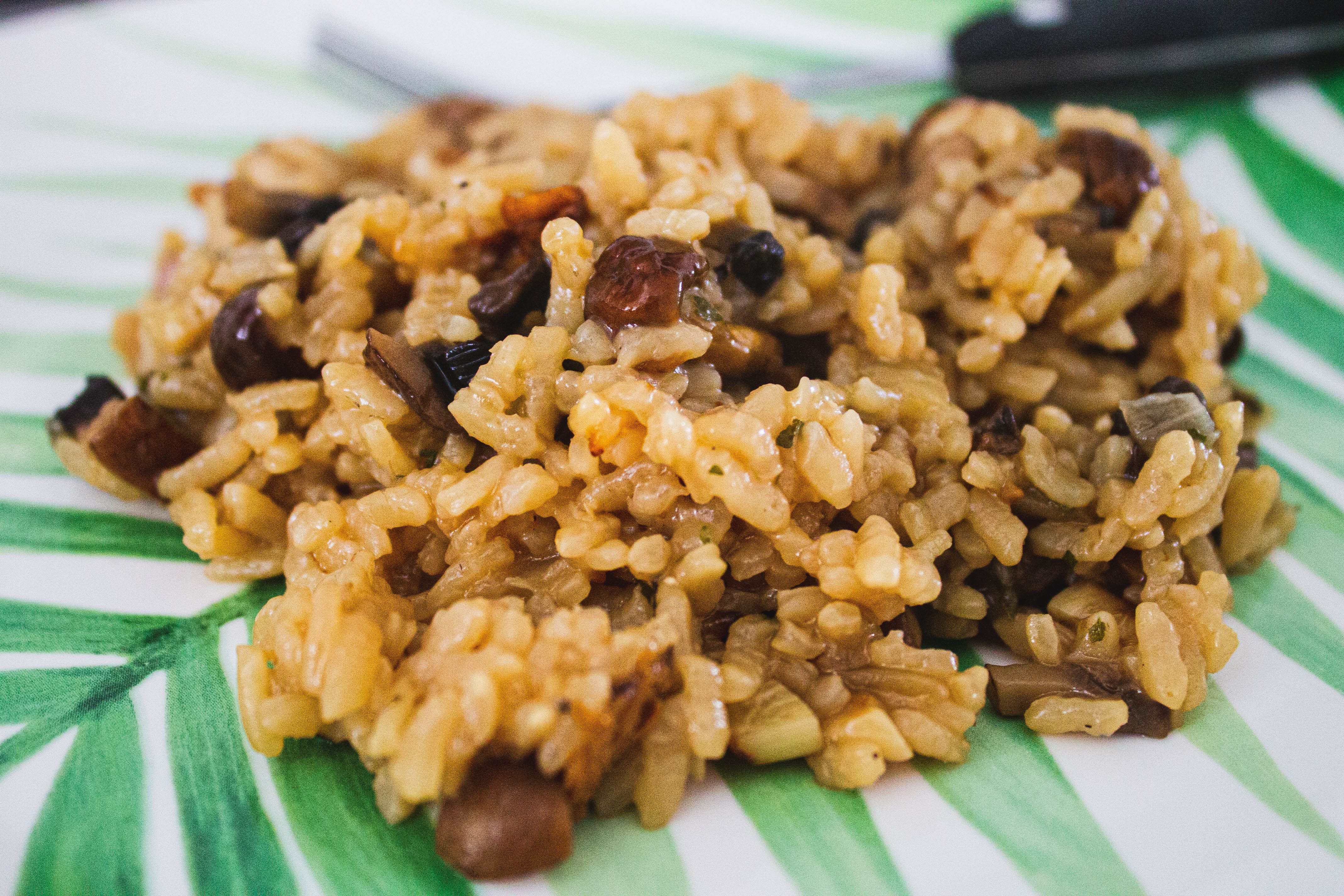
Vegan Arròs amb Bolets
Ingredients
16 oz (500g) mushrooms, chopped
1.5 cups (315g) rice
3 cups (700ml) mushroom broth
1/3 cup (80ml) white wine
1 onion, minced
2 cloves of garlic, minced
2 tbsp vegan butter
2 bay leaves
Parsley (1 sprig if fresh, 1 tbsp if dry)
Olive oil
Salt
Pepper
Kitchen Equipment
A pot with a lid
Instructions
- Melt the butter in a pot over medium heat, mixing it with a bit of oil. Once melted, add the onion and garlic. Fry until the onion is transparent (3-5 minutes).
- Add the bay leaves, and cook for another minute.
- Add the mushrooms, stirring to make sure everything is mixed. Cook the mushrooms for five minutes.
- Add the white wine, stirring again to ensure everything is mixed.
- Add the rice, broth, parsley, salt, and pepper, and mix.
- Turn the heat up to high, and let cook for 20 minutes, stirring occasionally.
A longer and more detailed description
Step-by-step instructions
Today’s recipe is fairly simple, but that doesn’t mean it’s not helpful to have some step-by-step instructions. The first step is, as always, to assemble your ingredients in a pleasing arrangement. Be sure to use your rice and wine to try to block the view of the kettle you don’t feel like moving as much as possible, and pick the most tattered piece of garlic from your vegetable drawer. These are critical steps in the cooking process.
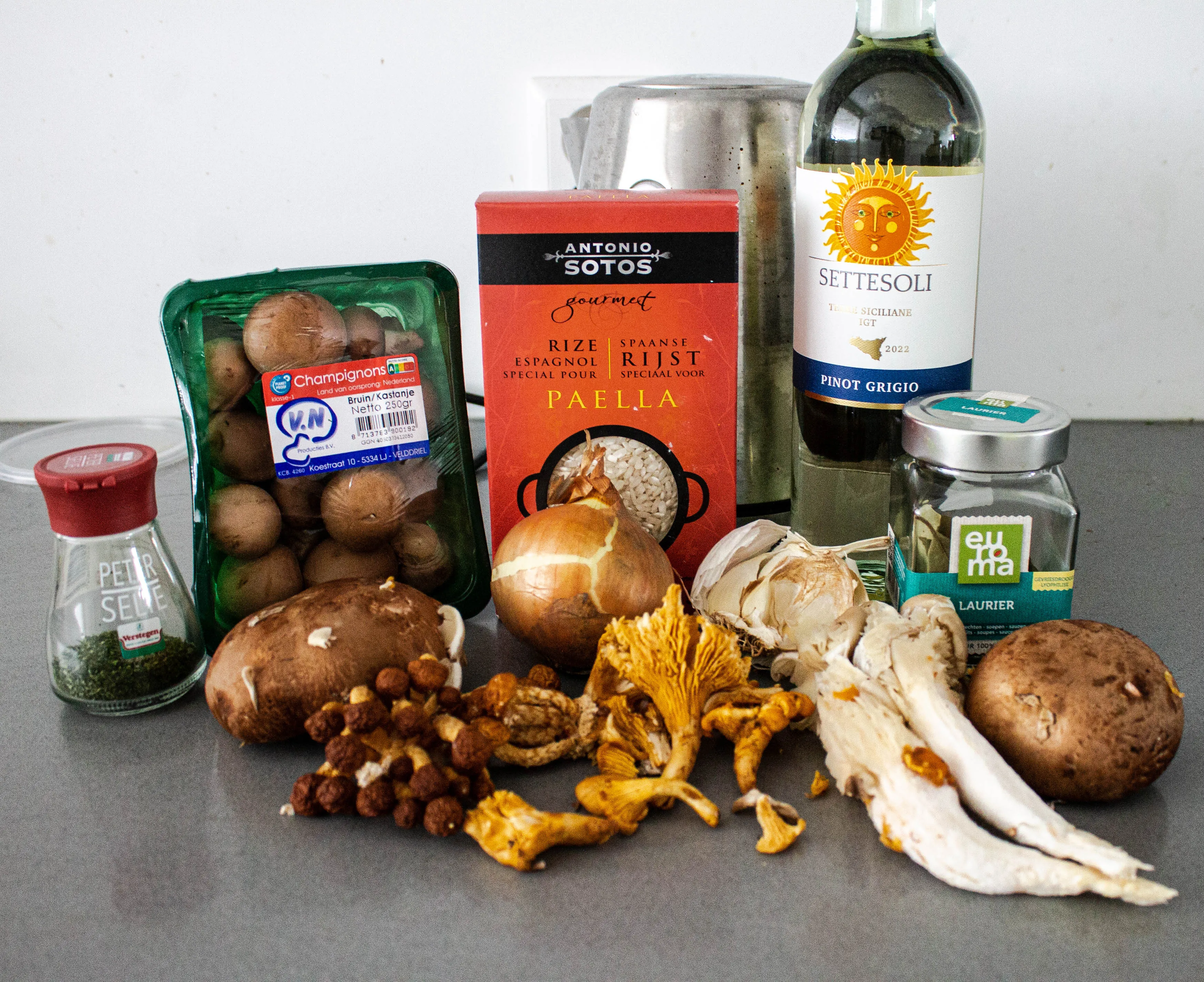
With your ingredients properly arranged and photographed, set your pot on the stove and melt the butter in it. Mix in some oil, and let those make satisfying noises while you dice your onion and garlic. Once your garlic and onion are diced, toss them into the pot with your bay leaves, and start chopping your mushrooms. Which mushrooms you use is entirely up to you, and how you chop them is also entirely your choice. My specific mushroom recommendations are in the suggestions section, but I’m just a blog post about food, not your mushroom muse. Add your mushrooms to the garlic and onions, and give everything a good stir.
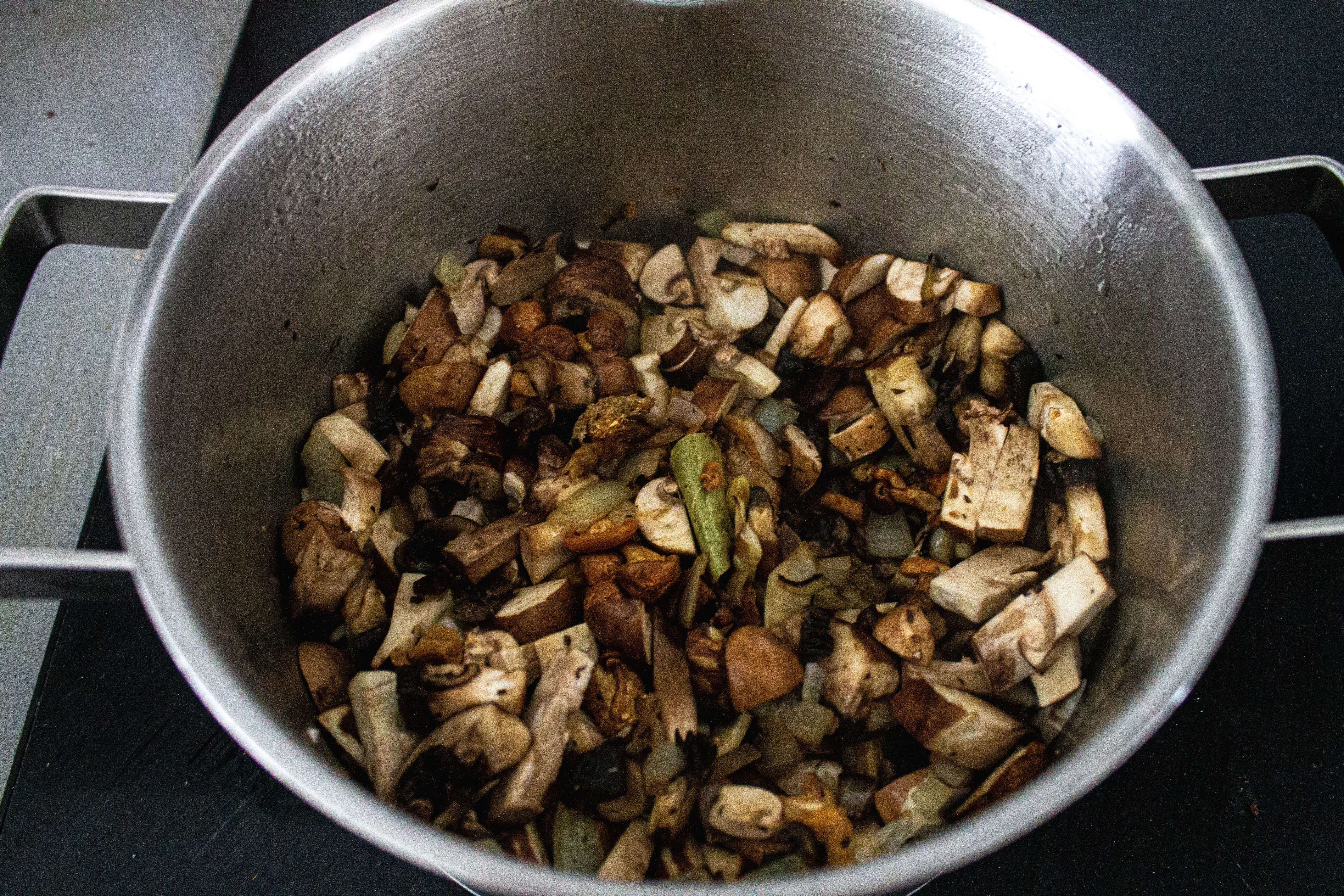
Remember when I said this dish was simple? This is where that really becomes true, because that is literally the end of your chopping, dicing, and mincing experience. Add the wine to the pot, giving everything a nice stir. Let it cook for a moment, then get excited at the prospect of food, and just add your rice, salt, pepper, and broth in as well. If you’re using dried parsley, add it here. If you’re using fresh parsley, add it several steps ago with your onion and garlic when I forgot to mention it because I was used dried parsley because my usual vegetable merchant wasn’t at the market, and I couldn’t find fresh parsley at the other, less well-stocked vegetable merchant. Mix everything, then cover and cook on high for twenty minutes.
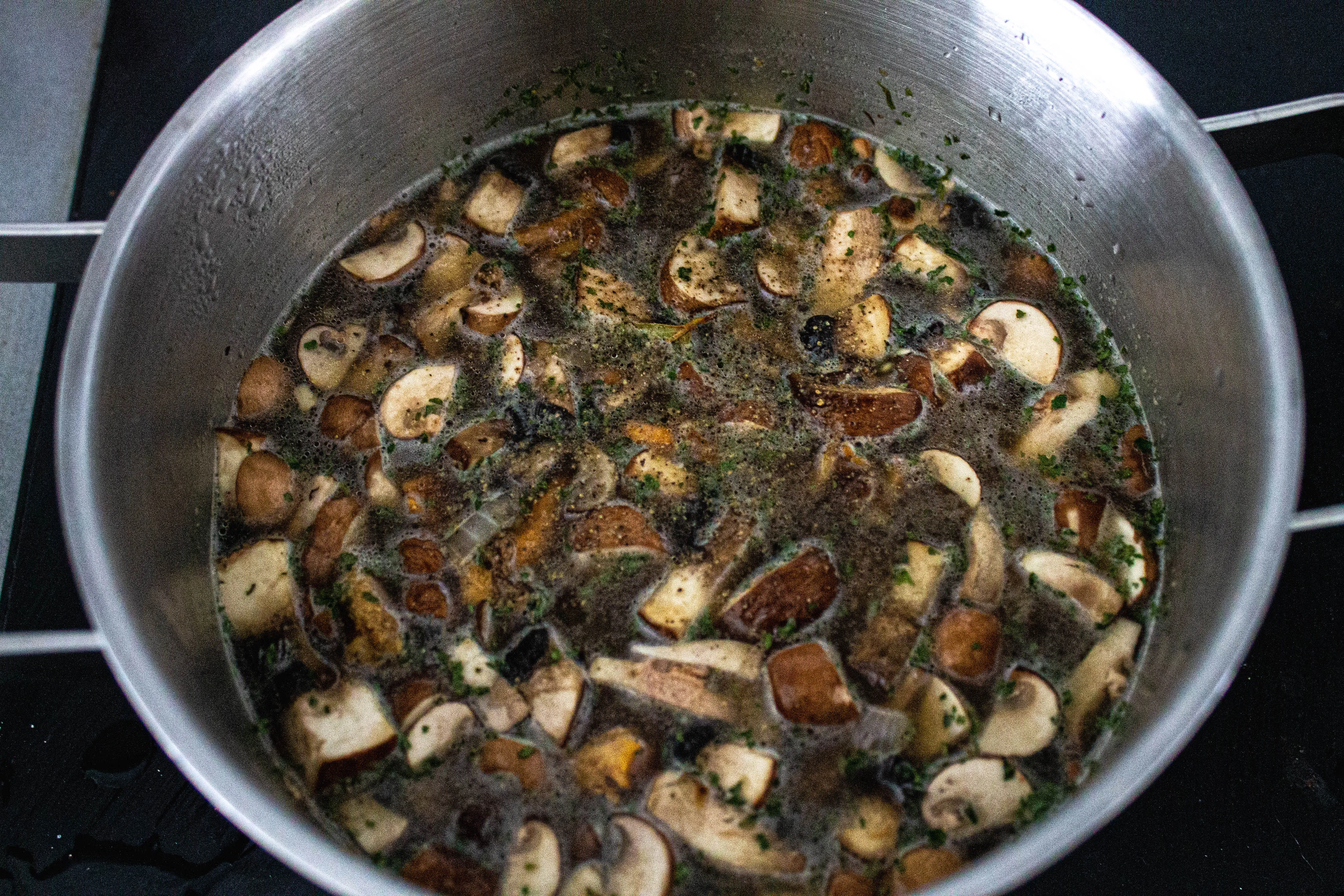
And that’s it! See? I told you it was easy. For the true Andorran experience, serve with the rest of that wine you got to cook with. Bon profit!
Substitutions and suggestions
For the mushrooms: I’m going to assume you’re here for specifically what kind of mushrooms you should use, and not a substitute for mushrooms as a whole. Traditionally, this dish is made with foraged mushrooms, which includes wood mushrooms, chanterelles, fairy rings, grey knights, and saffron milk caps. I fully admit that I did not go to Andorra in autumn to wild forage the mushrooms for this dish. Instead, I made due with the mushrooms I got from the local mushroom merchant, and with some chestnut mushrooms I got from the store. In my ingredients image above, I used (from left to right), chestnut mushrooms, baby portabellas, wood mushrooms, chanterelles, and an oyster mushroom. My recommendation would be to use the closest you can find to wild foraged mushrooms - or even try foraging in your area with a guide for a very fun experience - but which mushrooms you use depends entirely on what’s available to you. There’s no wrong answer here. Pick out the mushrooms that bring you joy and fit within your budget.
For the rice: There are many, many rices in the world, and I’m well aware that just saying “rice” isn’t helpful. For this dish, I used paella rice, though a wild rice mix would probably work just as well. Just like with the mushrooms, though, you can use whatever rice is available to you, just with an awareness that the taste and texture will change.
For the broth: I used a mushroom broth, which I thought was lovely, but which may not be easily found for everyone. You can substitute in vegetable broth or water.
For the wine: The wine here is used for flavouring and to provide a little more liquid for the rice. You can substitute it with water if wine isn’t your thing.
For the butter: Margarine works too. Or more oil. Or just…nothing, I guess.
What I changed to make it vegan
This is going to come as a shock, but rice with mushrooms is already vegetarian. Making it vegan was a fairly substitution of swapping butter for vegan butter.
A brief context for this food
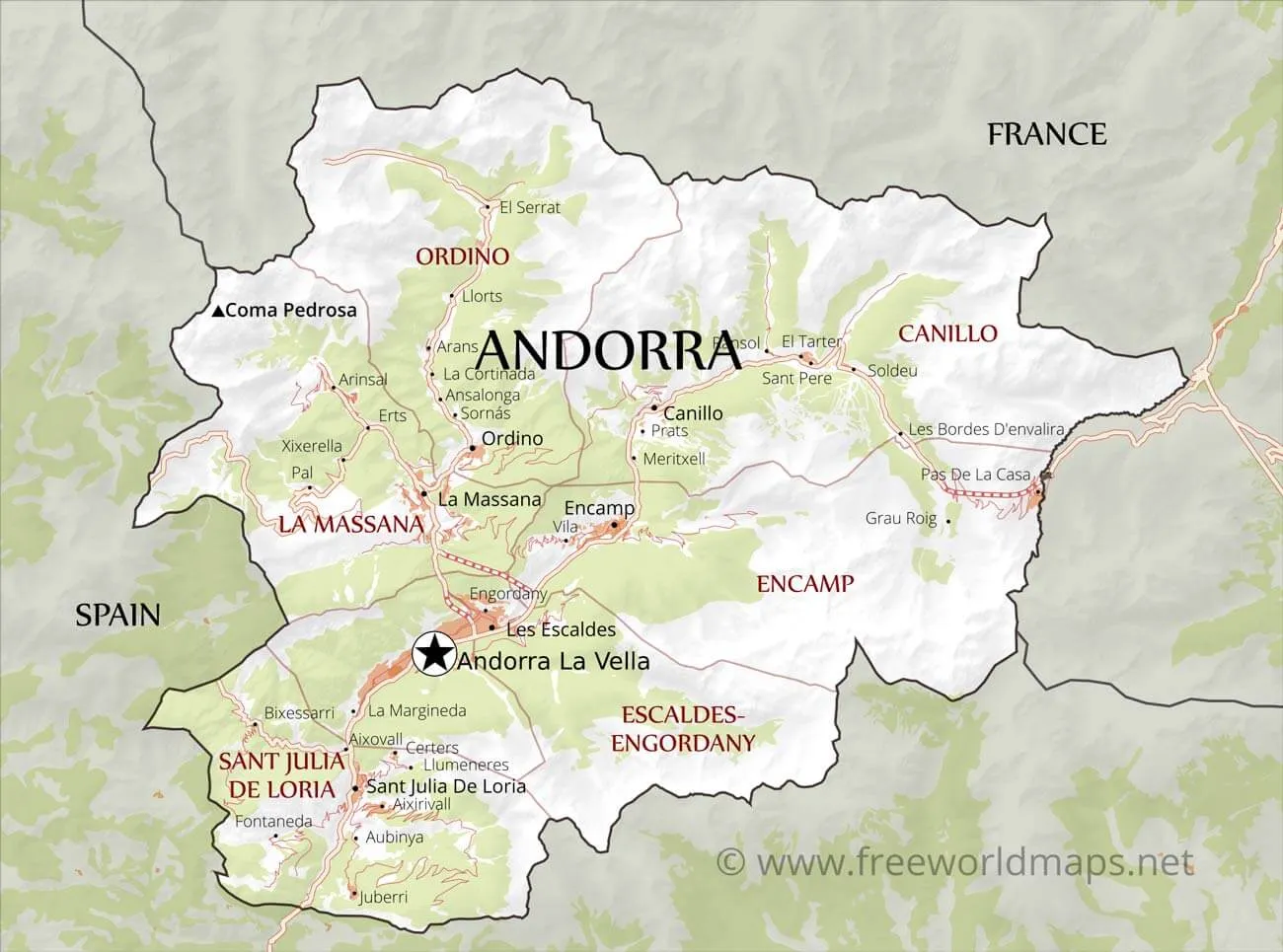
Andorran cuisine falls under the general umbrella of Catalan cuisine, though with decidedly less seafood than Catalan cuisine as a whole, and more of a focus on what’s available in its landlocked mountains and rivers. As a result, Andorran cuisine focuses more on fruits, nuts, mushrooms, red meat, river creatures, and wild greens than its neighbours.
Andorra also has a strong foraging tradition, particularly in autumn, and this dish is an outgrowth of that tradition. Because it is so mountainous and forested, Andorra is covered with mushrooms, some edible, and some not. Foraging for wild mushrooms has long been an Andorran tradition, with families wandering out into the forest to harvest what they could, and understanding the flavours and uses of the different species of mushroom they encountered.
I couldn’t find a history of this particular dish, but it is likely to have existed from antiquity. Cookbooks such as El llibre de la Cuina de Scala-Dei written in 1610 include some mushroom dishes, albeit from further south in Catalonia. Many of the recipes in this book date back to the Roman era, and it’s not unlikely that the same is true of this one. Indeed, this may be significantly older than even the Romans. Archaeological evidence shows there have been hunter-gatherers living in Andorra since 9500 BCE. The rice and mushrooms that make up this dish have been there just as long, and it’s entirely possible the spirit of the dish, if not its exact character, may be recognisable to these ancient Catalonians.
There is something truly delightful about making a recipe that is as ancient as human habitation of the area itself. There is a thread of shared human heritage, binding me and my kitchen back to neolithic hunter-gatherers. We both lay out the mushrooms we found, delighted and excited to cook them and make something wonderful out of them.
The history of food is not just about the history of any given dish, but rather, about the exploration of what that dish is and what it means to the people cooking and enjoying it. For me, there’s something deeply profound in engaging with a tradition that has existed for thousands of years. It’s a way of continuing that human story, and of weaving my own narrative into the grand tapestry that is the history of our species.
I hope you enjoy becoming part of that narrative as well.